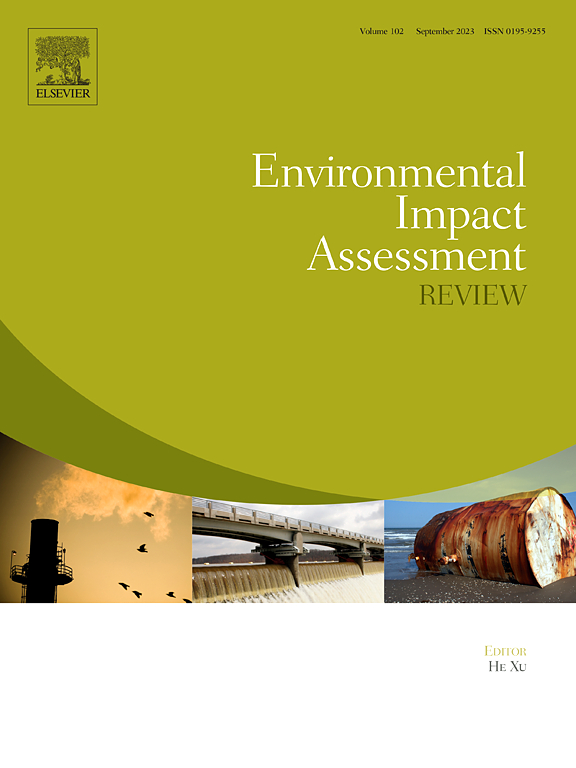Beyond compliance: Enhancing biodiversity through transformative mitigation strategies in spatial planning related SEAs and EIAs
IF 11.2
1区 社会学
Q1 ENVIRONMENTAL STUDIES
引用次数: 0
Abstract
The global biodiversity crisis underscores the need for transformative change in how development impacts are managed, and biodiversity is preserved. This study explores the integration of Strategic Environmental Assessment (SEA) and Environmental Impact Assessment (EIA) within spatial planning and infrastructure projects, emphasizing their evolving role in promoting both mitigation and enhancement of impacts. Traditionally, SEAs and EIAs have focused on minimizing negative impacts through the mitigation hierarchy; however, this research advocates for a broader, proactive application that includes enhancement measures to achieve net-positive biodiversity impacts. Using a collection of 200 SEA and EIA reports from Denmark, Spain, Portugal, and Germany, analyzed within the BioValue research project, this study examines how these assessments apply the mitigation and enhancement hierarchy to promote positive outcomes. The findings reveal significant variability in the practical application of SEAs and EIAs, highlighting both strengths and gaps in integrating enhancement measures. By focusing on enhancement as a formal requirement and strengthening the ‘avoidance’ step in the mitigation hierarchy, this paper argues that SEA and EIA can transition from reactive assessments to proactive instruments in environmental governance and add value to spatial planning developments. The study concludes with recommendations for embedding enhancement into regulatory frameworks, encouraging a shift towards transformative environmental assessment practice.
超越遵守:通过与空间规划有关的环境影响评估和环境影响评估中的变革性缓解战略加强生物多样性
全球生物多样性危机突出表明,需要在如何管理发展影响和保护生物多样性方面进行变革。本研究探讨了战略环境评估(SEA)和环境影响评估(EIA)在空间规划和基础设施项目中的整合,强调了它们在促进缓解和增强影响方面的不断发展的作用。传统上,环境影响评价和环境影响评价侧重于通过缓解等级制度尽量减少负面影响;然而,本研究提倡更广泛、更积极的应用,包括增强措施,以实现净积极的生物多样性影响。在BioValue研究项目中分析了来自丹麦、西班牙、葡萄牙和德国的200份SEA和EIA报告,本研究考察了这些评估如何应用缓解和增强层次来促进积极成果。研究结果揭示了海洋环境评价和环境影响评价在实际应用中的显著差异,突出了综合增强措施的优势和差距。本文认为,通过将增强作为一种正式要求,并加强缓解层次中的“避免”步骤,环评和环境影响评估可以从被动评估转变为环境治理的主动工具,并为空间规划发展增加价值。该研究最后提出了将强化纳入监管框架的建议,鼓励向变革性环境评估实践转变。
本文章由计算机程序翻译,如有差异,请以英文原文为准。
求助全文
约1分钟内获得全文
求助全文
来源期刊

Environmental Impact Assessment Review
ENVIRONMENTAL STUDIES-
CiteScore
12.60
自引率
10.10%
发文量
200
审稿时长
33 days
期刊介绍:
Environmental Impact Assessment Review is an interdisciplinary journal that serves a global audience of practitioners, policymakers, and academics involved in assessing the environmental impact of policies, projects, processes, and products. The journal focuses on innovative theory and practice in environmental impact assessment (EIA). Papers are expected to present innovative ideas, be topical, and coherent. The journal emphasizes concepts, methods, techniques, approaches, and systems related to EIA theory and practice.
 求助内容:
求助内容: 应助结果提醒方式:
应助结果提醒方式:


